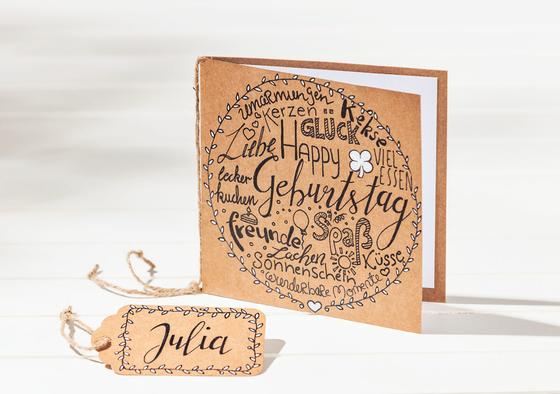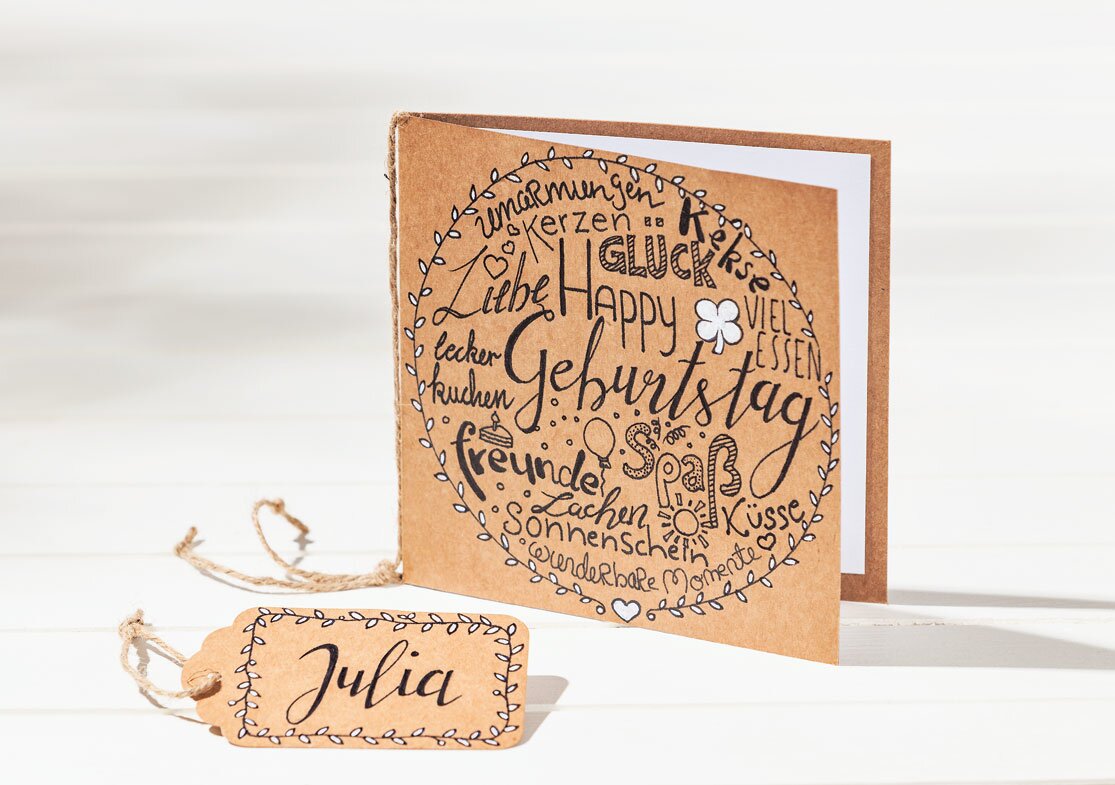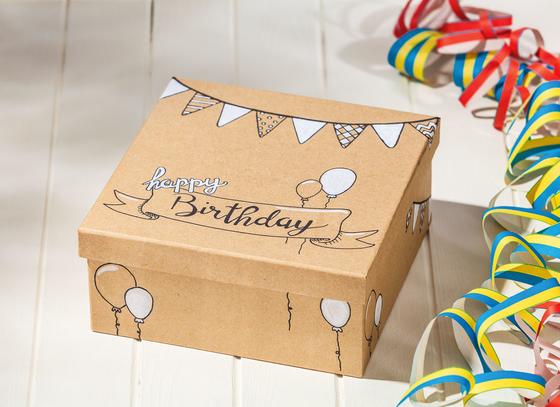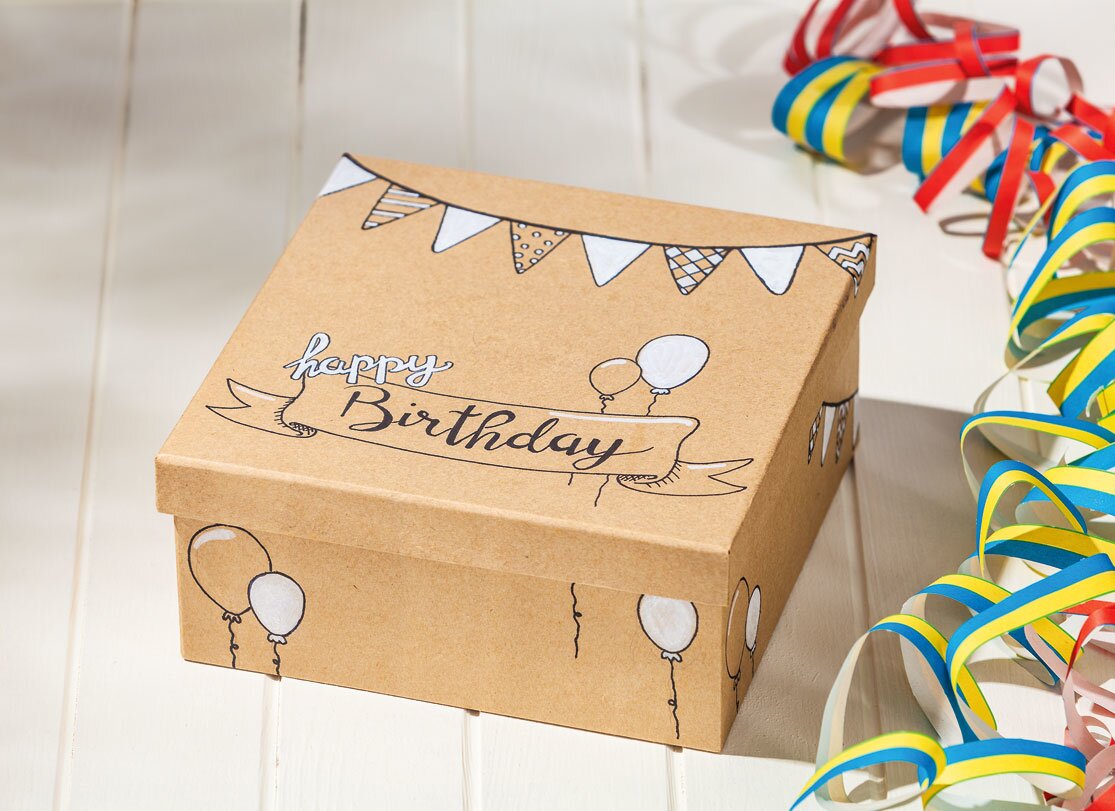- Secure order
- Easy return shipment
- Service-Hotline 03 69 61 69 10
Instructions No. 1521
Handlettering - the art of writing
In handlettering, letters and messages are not written by PC, but artistically by hand. In addition, the message is supported by small squiggles, lines and banners.
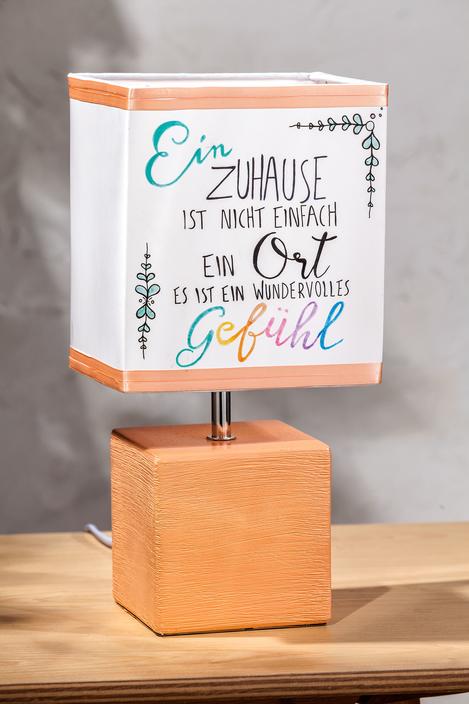
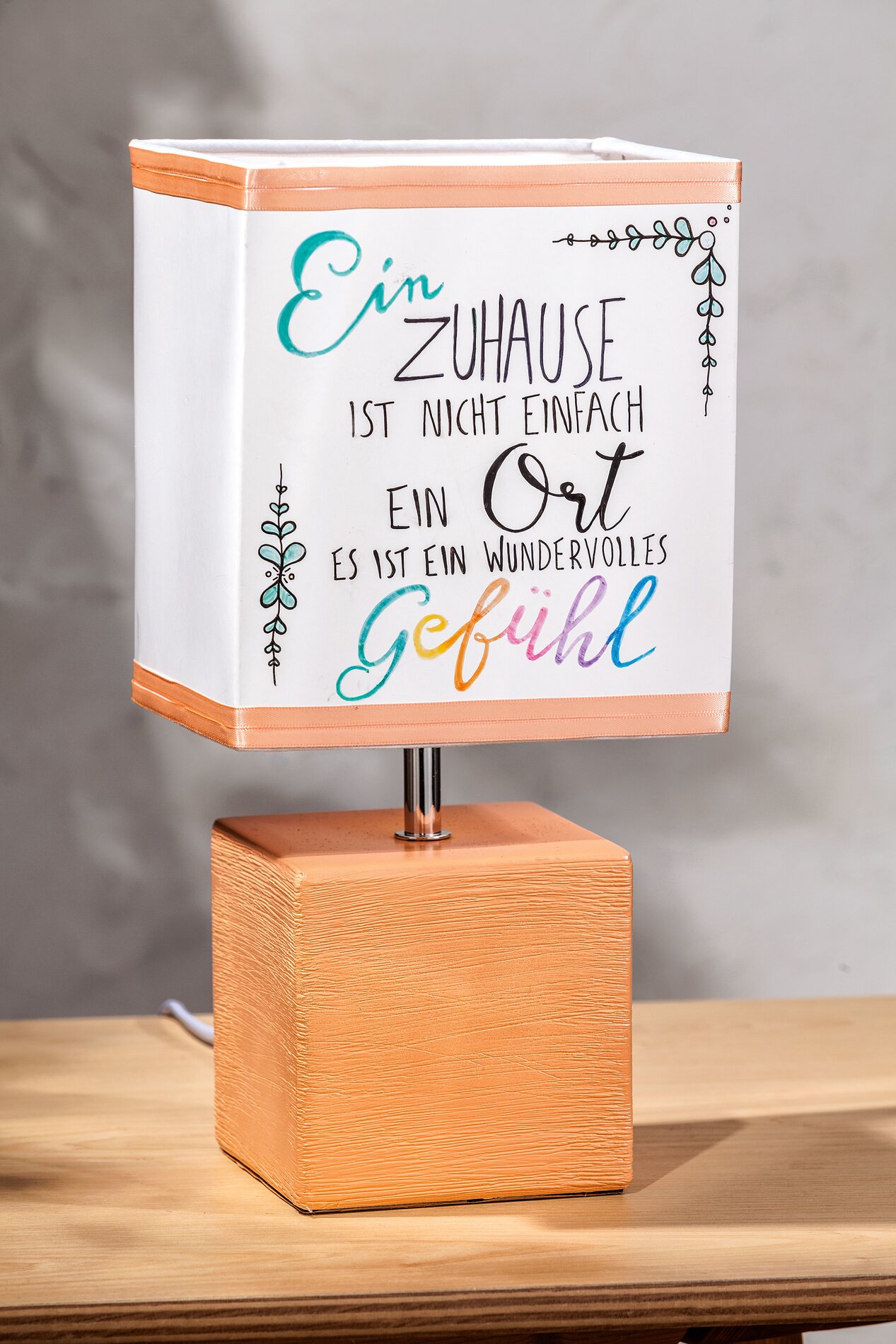
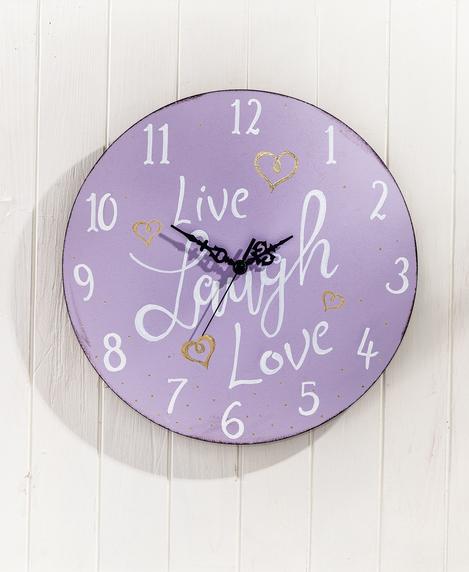
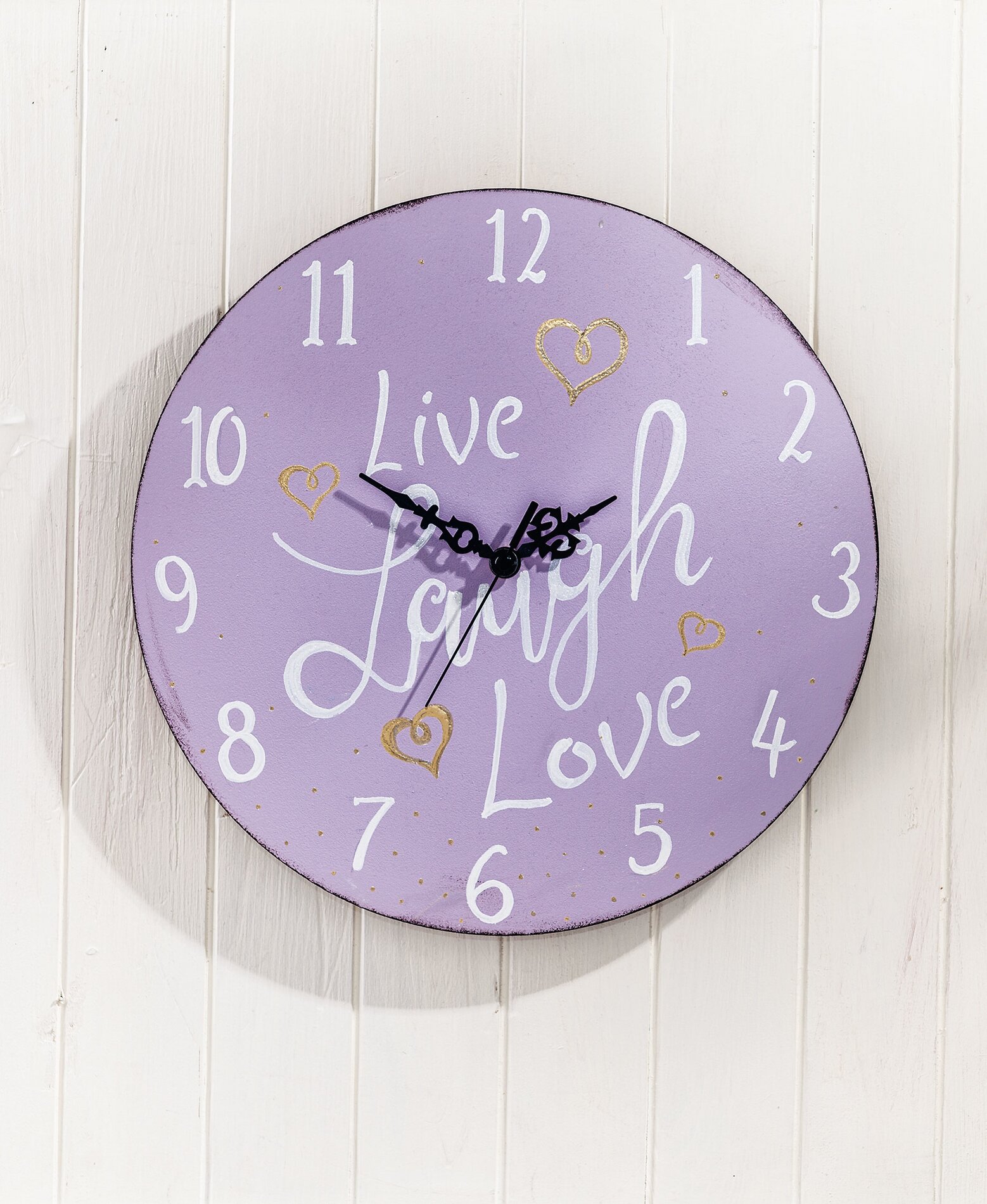
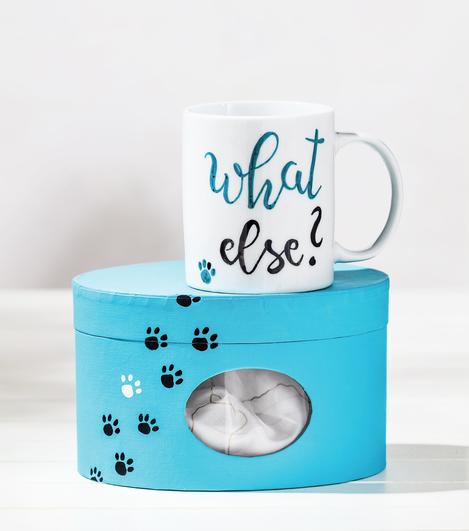
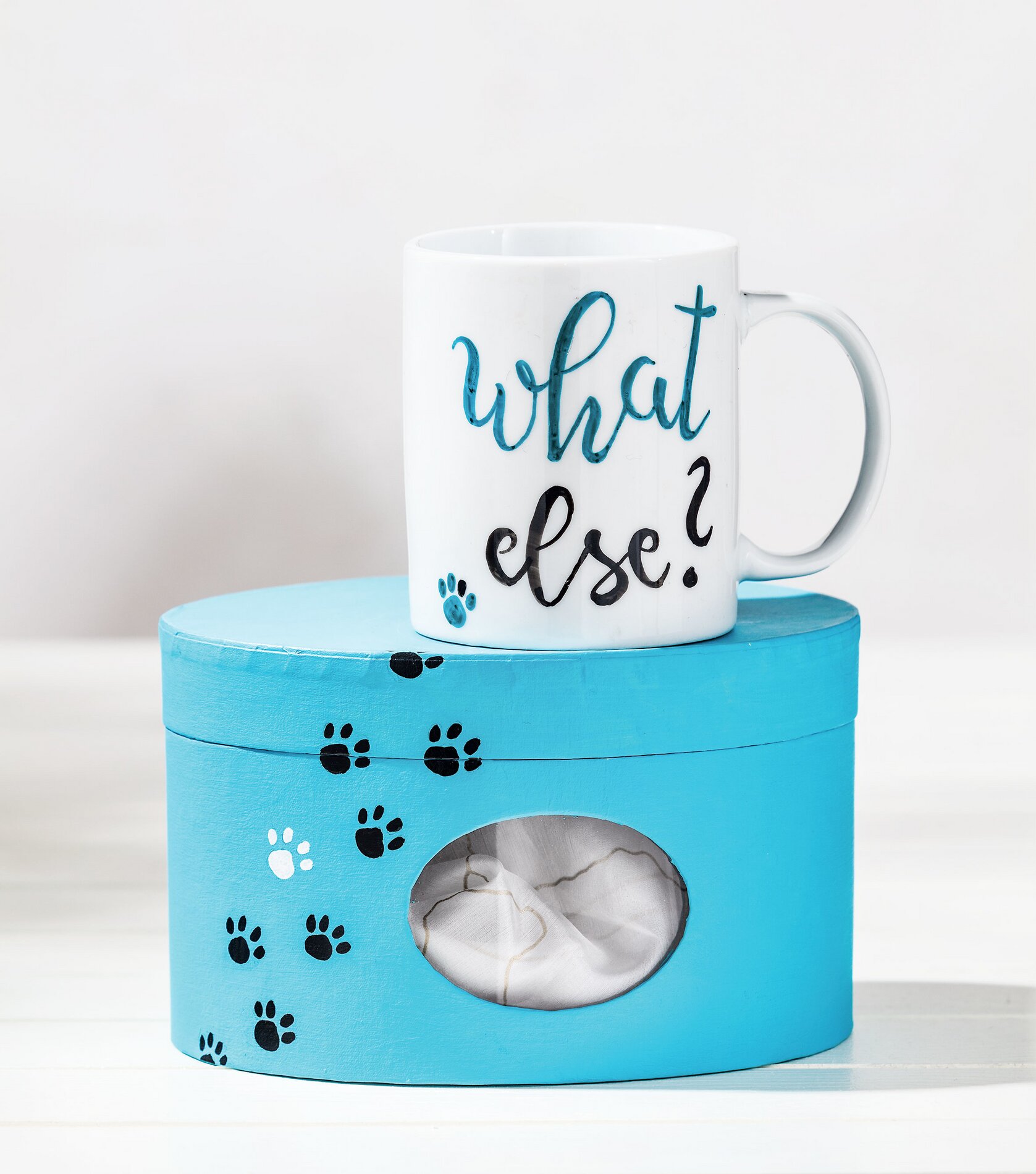
Introduction to hand lettering: your creative start
Whether on postcards, in advertisements or on novel covers - decorative lettering can be found everywhere at the moment! This art, known as "lettering", has also fascinated me. Do you feel the same way? Then find out everything you need to know to get started in the creative world of hand lettering. Have fun with it!

What is hand lettering?
You come across the topic of lettering on social platforms such as Instagram and Pinterest all the time. The term can best be described as letter art. Hand lettering means that letters and words are drawn by hand - with great care and attention. In contrast to traditional calligraphy, which is drawn with a pen and ink , you use fineliners or felt-tip pens for hand lettering. Ideal for emphasizing words of different sizes. And now to the practice!
Hand lettering - what do I need to get started?
You don't need much to get started: a pencil, a good eraser and fineliners are essential. Make sure that the fineliners are available in different thicknesses and use waterproof ink. This way, nothing smudges when you add accents with felt-tip pens.
You will also need a brush pen for brush lettering. We recommend the brush pens from edding. They are of high quality lace and do not fray. Don't forget: Choice of paper is important! Start with a learning notebook (ruler size 1) and a papier-mâché notebook for sketches.
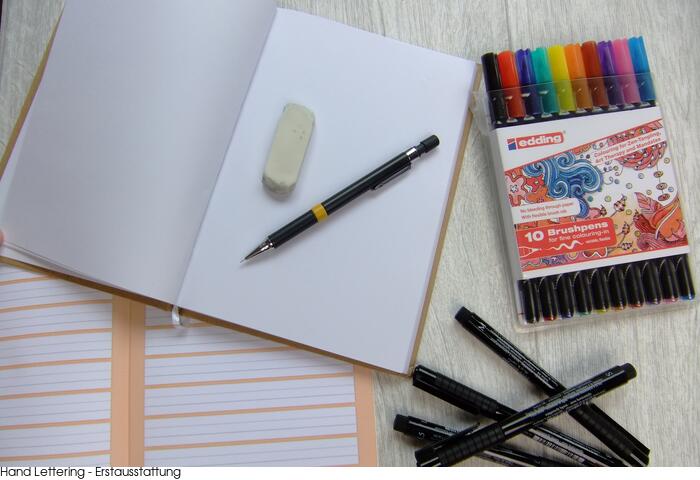
Collect fonts (typefaces)
To get the inspiration flowing, you should build up a repertoire of different fonts. Suggestions for experimentation: Vary the width and height of normal block letters. Keep your eyes open in everyday life, beautiful fonts are easy to color. Pinterest and Instagram in particular offer many hand lettering examples. Start by tracing letters to get a feel for how the pen works.
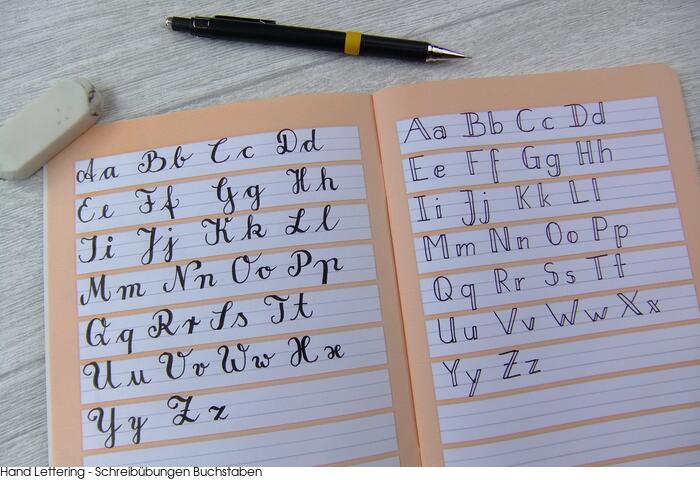
One method for collecting fonts and design ideas is to write down different designs of a word in your notebook. Experiment with different pens. Remember: practice makes perfect!
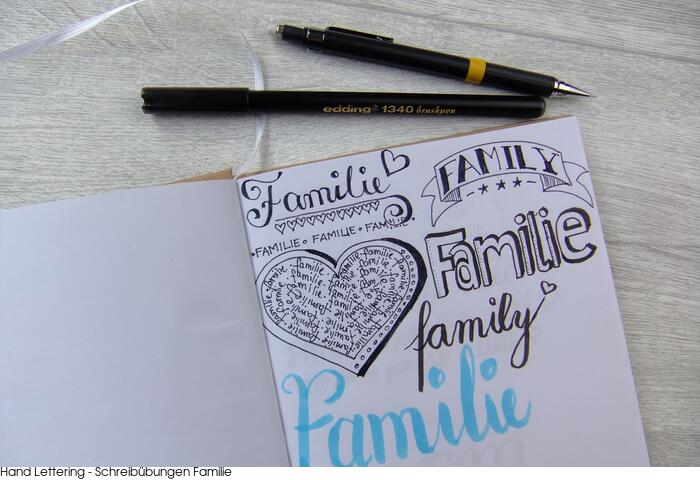
"Fake" calligraphy - the effect of a pen made easy
Calligraphy can be difficult, which is why there is the technique of "fake" calligraphy. Write a word in font with a fineliners. Then widen all the lines leading downwards. Paint the areas and your word will look as if it was written with a pen.
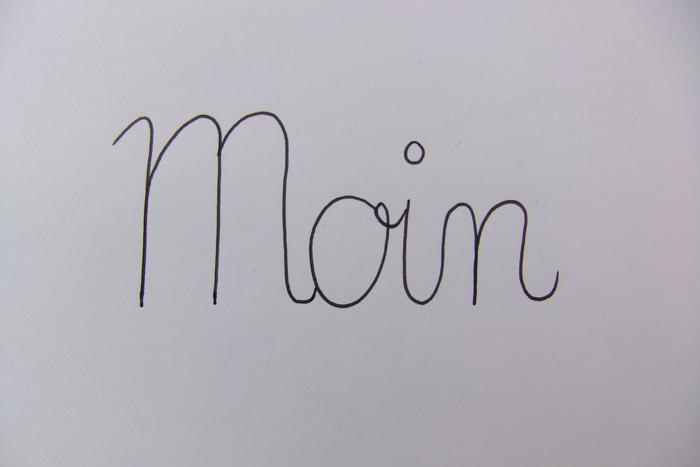
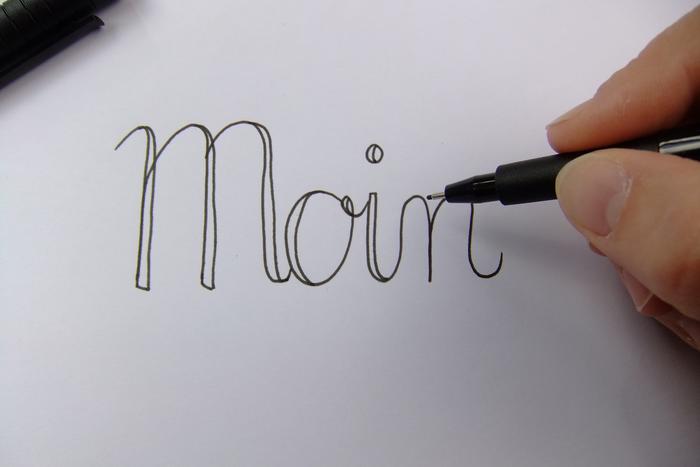
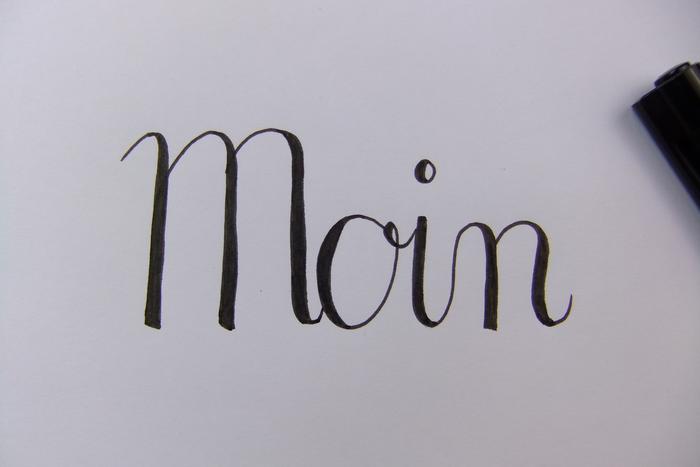
Brush lettering
Brush lettering fascinates with artfully curved letters. Before you let your wrist swing, practise how the brush pen reacts. Press down on lines, draw loosely on lines upwards. Important: The transition should be clean. practice individual letters before you tackle words. Over time, you will get a feel for how the pen works.
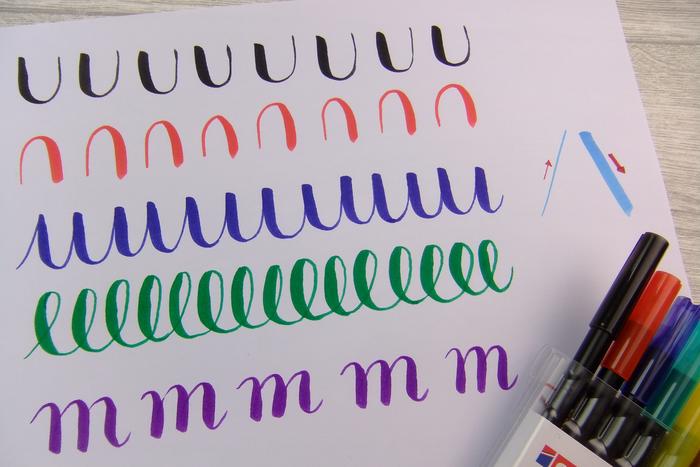
Decorative elements: Banners, squiggles and lines
A repertoire of decorative elements such as banners, dividing lines, arrows and squiggles will improve your art. Just try it out - there is no "wrong" way!
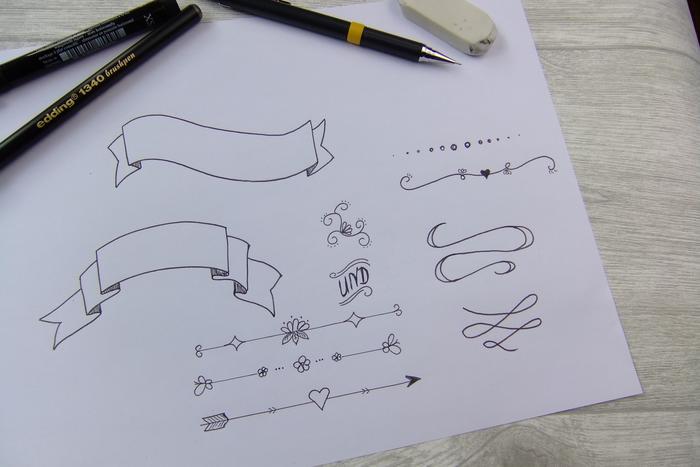
This was a first insight into lettering. If you have any questions, write them either directly here or on Facebook.
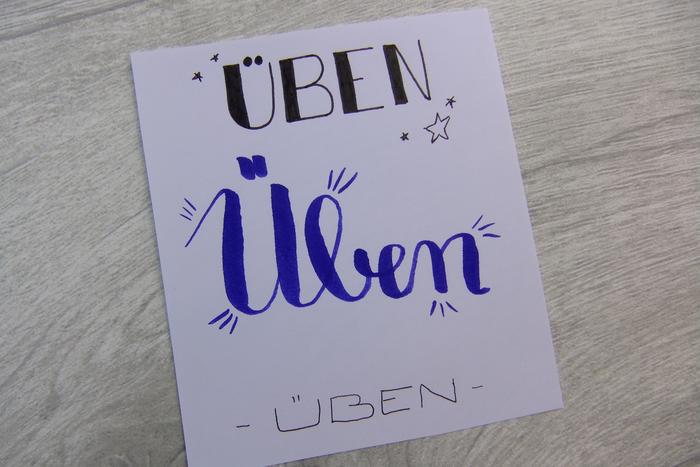
Ready for your own hand lettering adventure?
Visit our online store and discover the complete Selection of materials and tools you need to get started with hand lettering. Start your creative project today!
